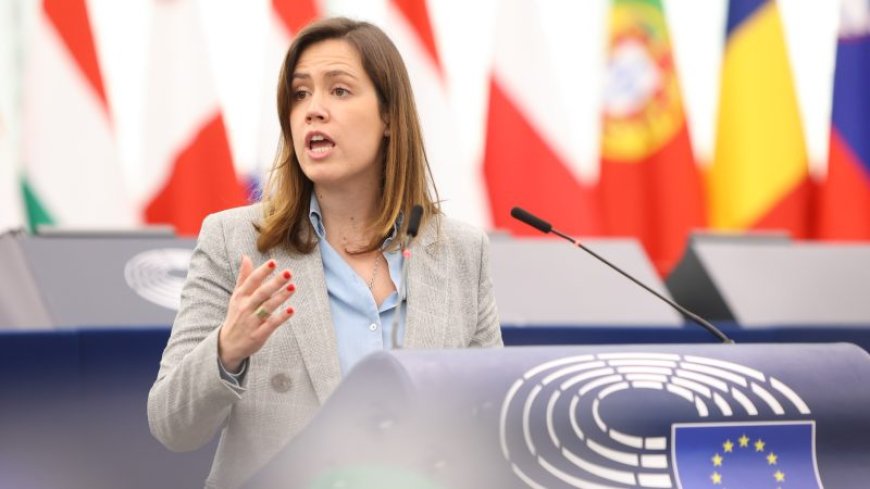EU Parliament approves deal on world’s first carbon removal certification scheme
EU Parliament approves deal on world's first carbon removal certification scheme EURACTIV

The European Parliament Approves New Carbon Removal Certification Scheme

The European Parliament voted yesterday (Wednesday, 10 April) in Brussels to approve a deal with national governments on a new carbon removal certification scheme.
The new rules establish a registry for certified units of carbon dioxide, which have been removed from the atmosphere via industrial or nature-based processes.
In time, this could unlock a market for captured CO2 and incentivize actors to remove and store atmospheric carbon.
Lead lawmaker on the file Lídia Pereira was “delighted” and said that she was “thrilled to see that farmers can have an extra revenue stream” from carbon capture.
The Sustainable Development Goals (SDGs)
- Goal 13: Climate Action – The new carbon removal certification scheme aligns with the SDG 13 by promoting actions to combat climate change and its impacts.
- Goal 15: Life on Land – The scheme encourages nature-based processes for carbon removal, contributing to the preservation and restoration of terrestrial ecosystems.
The European Commission has proposed a target to reduce 2040 greenhouse gas emissions by 90% relative to 1990 levels, and has estimated that 280 million tons of CO2 equivalent would need to be captured for this target to be reached.
Environmental NGOs reacted with scepticism.
Mathieu Mal, policy officer for Agriculture and Climate at the European Environmental Bureau highlighted the new law’s “question marks and red flags” and said that how the rules are implemented will determine whether the new law becomes “a tool for greenwashing, ultimately further delaying climate action”.
Once approved by national ministers, the new rules will enter into EU law.
Read more with Euractiv
Subscribe now to our newsletter EU Elections Decoded
SDGs, Targets, and Indicators Analysis
1. Which SDGs are addressed or connected to the issues highlighted in the article?
- SDG 13: Climate Action
- SDG 15: Life on Land
The article discusses the approval of a new carbon removal certification scheme, which is directly related to climate action (SDG 13). The scheme aims to incentivize actors to remove and store atmospheric carbon, which is crucial for mitigating climate change. Additionally, the article mentions that farmers can have an extra revenue stream from carbon capture, highlighting the connection to SDG 15, which focuses on protecting, restoring, and promoting sustainable use of terrestrial ecosystems.
2. What specific targets under those SDGs can be identified based on the article’s content?
- SDG 13.2: Integrate climate change measures into national policies, strategies, and planning.
- SDG 15.2: Promote the implementation of sustainable management of all types of forests, halt deforestation, restore degraded forests, and substantially increase afforestation and reforestation globally.
The article does not explicitly mention specific targets under SDG 13 and SDG 15. However, the approval of the carbon removal certification scheme aligns with the broader target of integrating climate change measures into national policies and planning (SDG 13.2). Furthermore, the scheme’s focus on carbon capture and storage contributes to the promotion of sustainable management of terrestrial ecosystems and the restoration of degraded forests (SDG 15.2).
3. Are there any indicators mentioned or implied in the article that can be used to measure progress towards the identified targets?
- Number of certified units of carbon dioxide removed from the atmosphere via industrial or nature-based processes.
- Amount of greenhouse gas emissions reduced by capturing and storing atmospheric carbon.
The article mentions the establishment of a registry for certified units of carbon dioxide that have been removed from the atmosphere. This indicates that the number of certified units can serve as an indicator to measure progress towards the target of integrating climate change measures into national policies (SDG 13.2). Additionally, the article refers to the European Commission’s proposed target to reduce greenhouse gas emissions by 90% by 2040 and the estimated amount of CO2 equivalent that needs to be captured. These figures can be used as indicators to track progress in reducing emissions and capturing atmospheric carbon.
SDGs, Targets, and Indicators Table
| SDGs | Targets | Indicators |
|---|---|---|
| SDG 13: Climate Action | 13.2: Integrate climate change measures into national policies, strategies, and planning. | – Number of certified units of carbon dioxide removed from the atmosphere via industrial or nature-based processes. – Amount of greenhouse gas emissions reduced by capturing and storing atmospheric carbon. |
| SDG 15: Life on Land | 15.2: Promote the implementation of sustainable management of all types of forests, halt deforestation, restore degraded forests, and substantially increase afforestation and reforestation globally. | – Number of certified units of carbon dioxide removed from the atmosphere via industrial or nature-based processes. – Amount of greenhouse gas emissions reduced by capturing and storing atmospheric carbon. |
Behold! This splendid article springs forth from the wellspring of knowledge, shaped by a wondrous proprietary AI technology that delved into a vast ocean of data, illuminating the path towards the Sustainable Development Goals. Remember that all rights are reserved by SDG Investors LLC, empowering us to champion progress together.
Source: euractiv.com

Join us, as fellow seekers of change, on a transformative journey at https://sdgtalks.ai/welcome, where you can become a member and actively contribute to shaping a brighter future.







